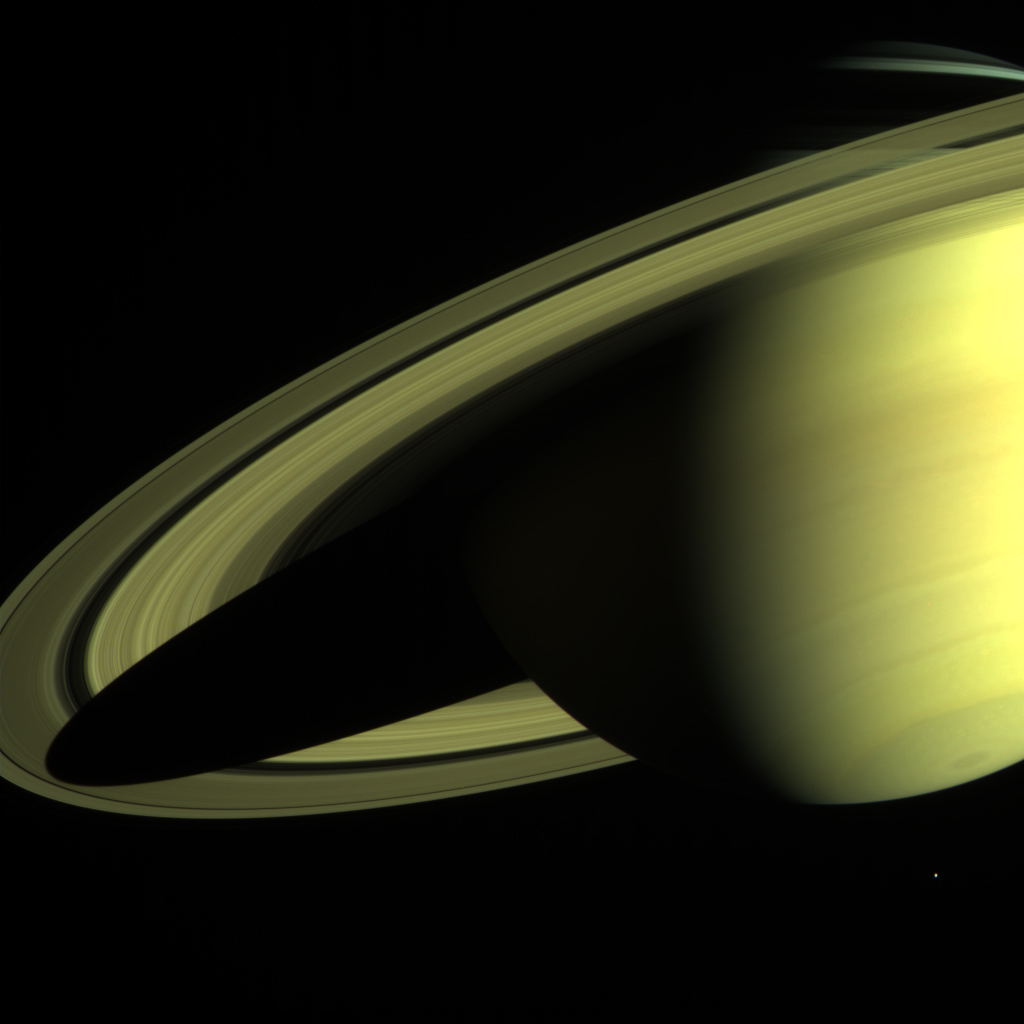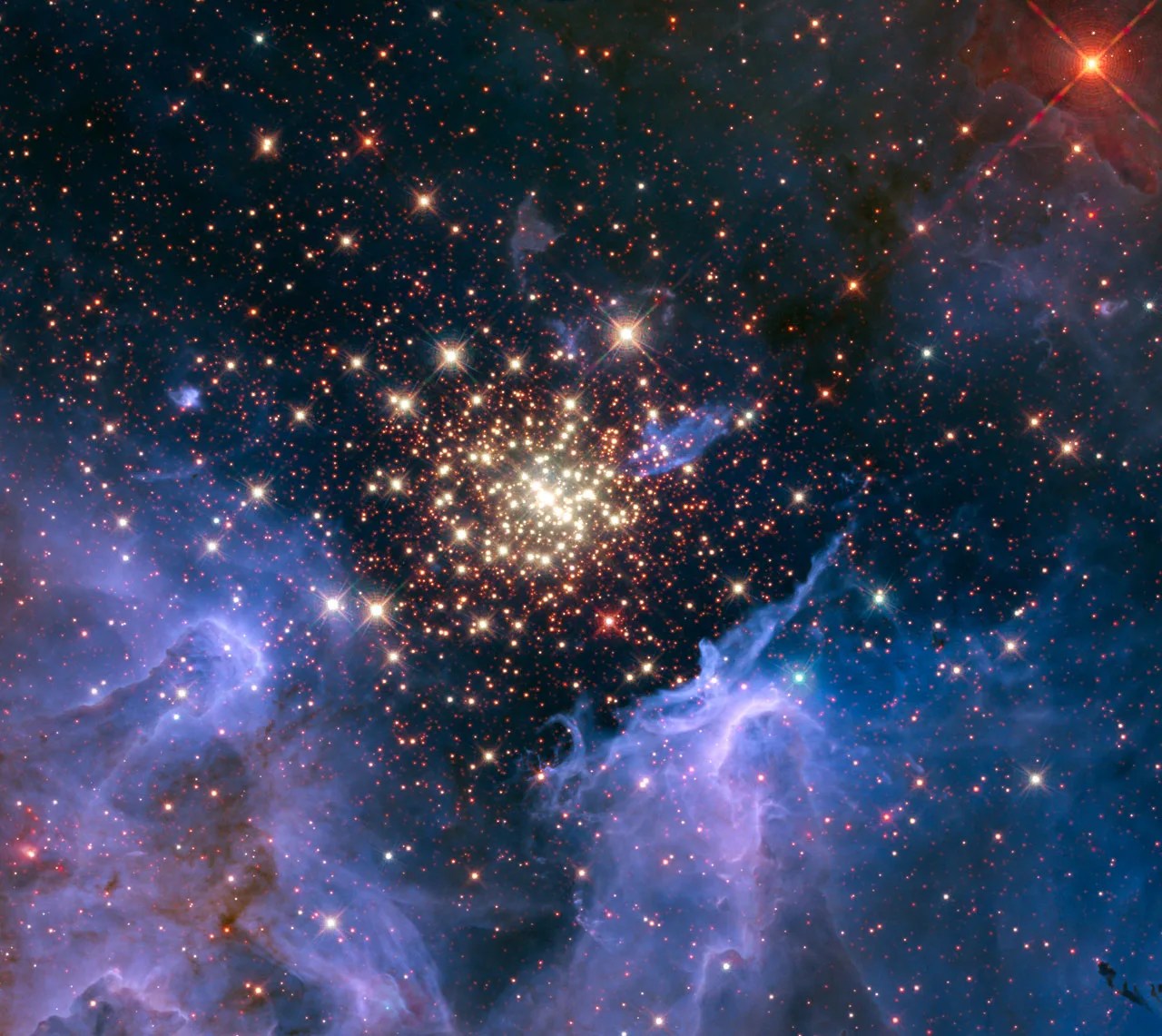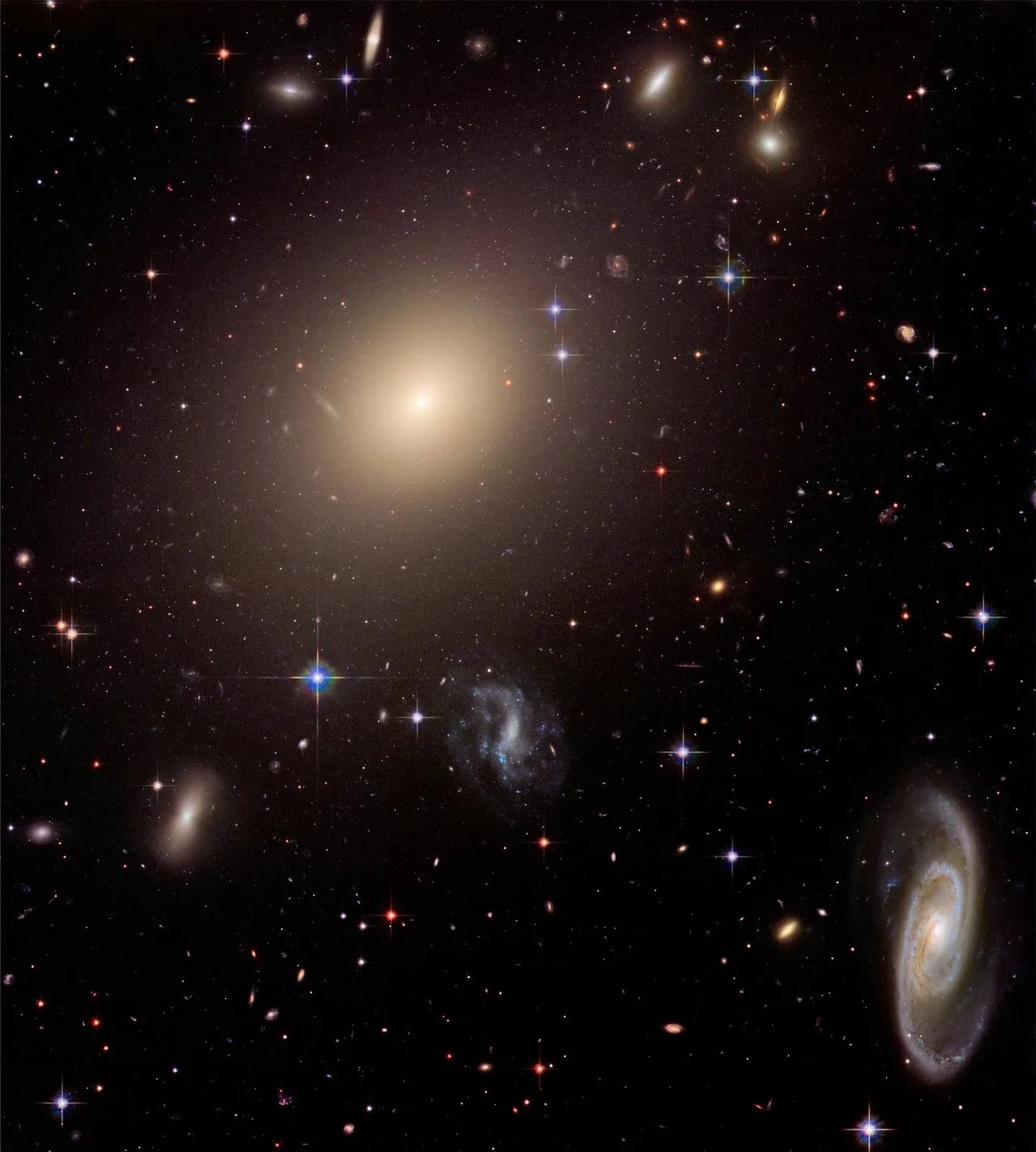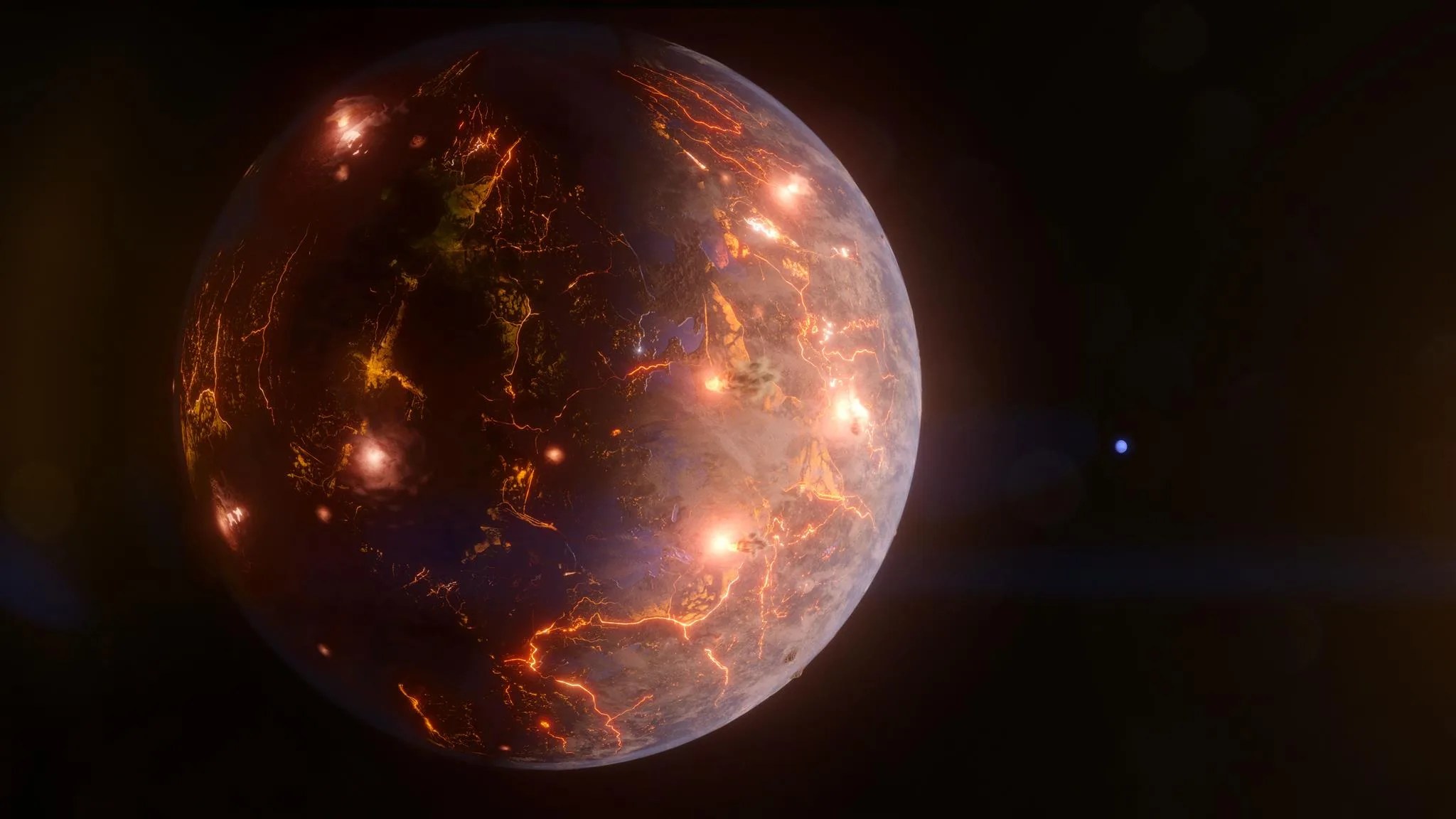2 min read
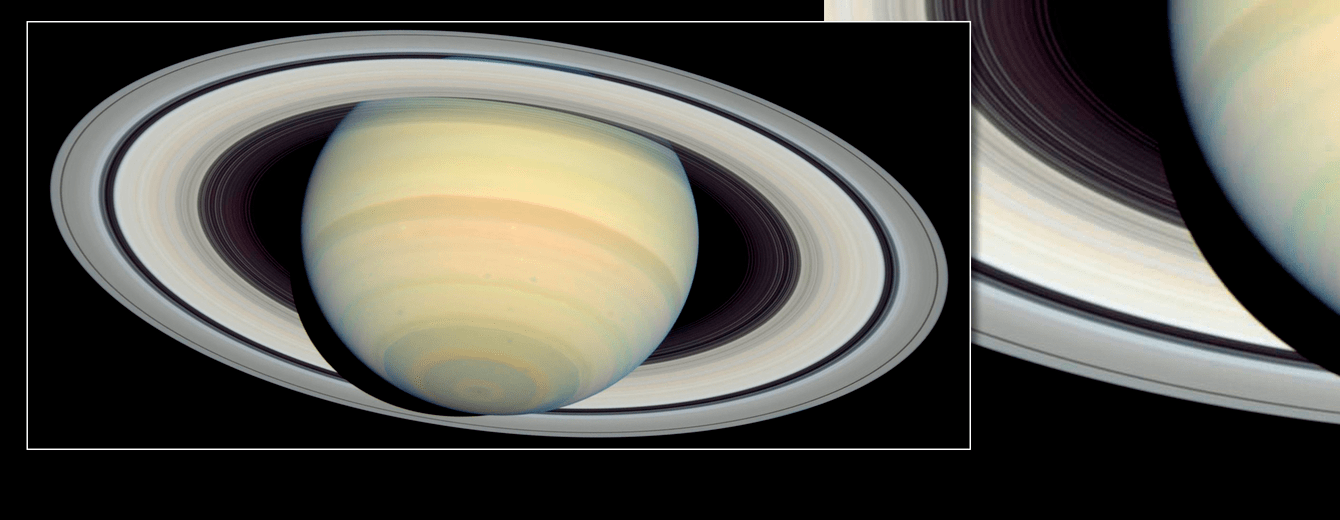
As NASA's Cassini spacecraft hurtles toward a July 1, 2004 rendezvous with Saturn, the Hubble Space Telescope continues snapping breathtaking pictures of the solar system's most photogenic planet. This latest view, taken on March 22, 2004, is so sharp that many individual ringlets can be seen in Saturn's ring plane.
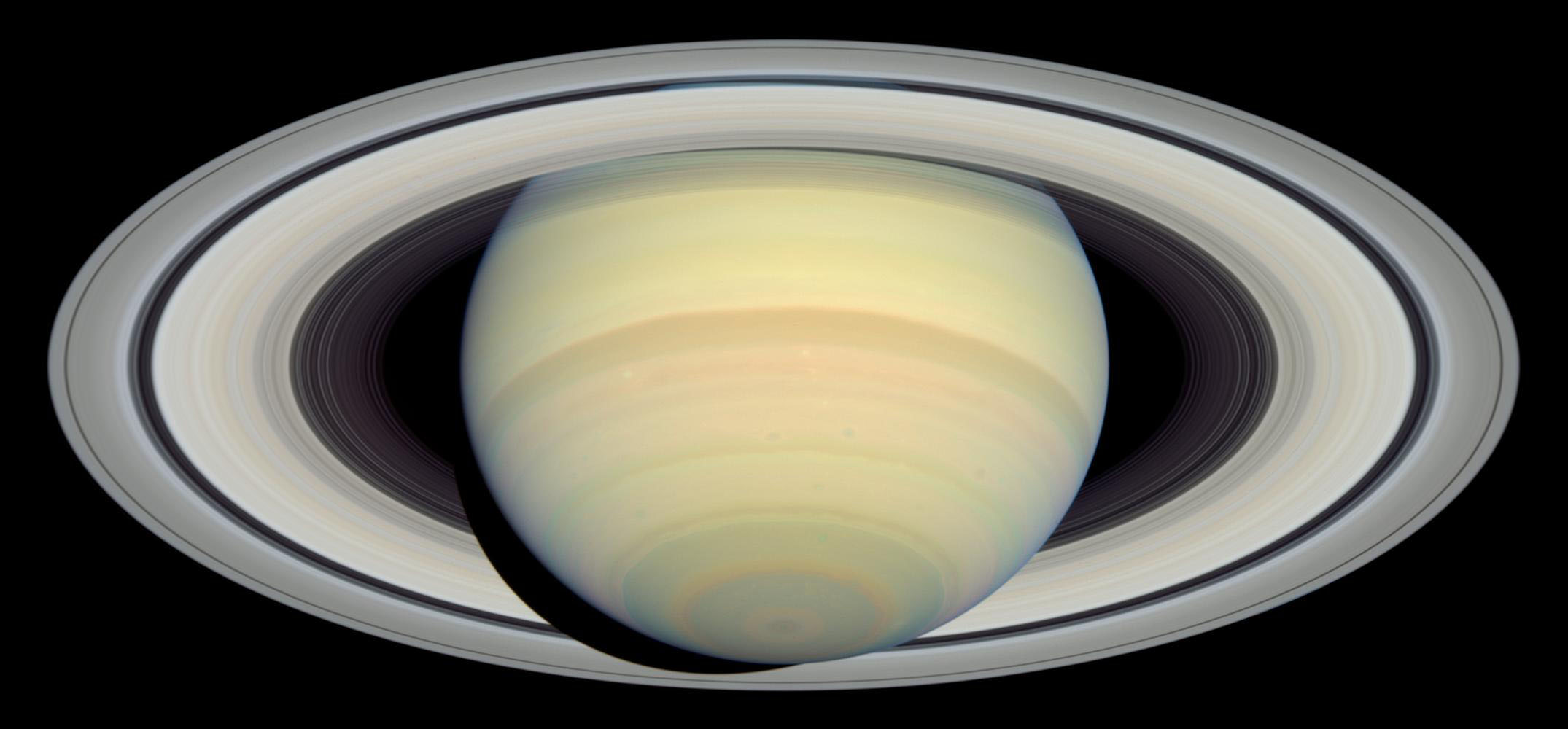
Though Hubble is nearly a billion miles farther from Saturn than the Cassini probe, Hubble's exquisite optics, coupled with the high resolution of its Advanced Camera for Surveys (ACS), allow it to take pictures of Saturn which are nearly as sharp as Cassini's wide-angle views of the full planet as it begins its approach. Of course, Cassini will ultimately far exceed the resolution of Hubble during its close encounter with Saturn; indeed, Cassini's sharpness began to surpass Hubble's when it approached to within 14 million miles (23 million km) of Saturn this month.
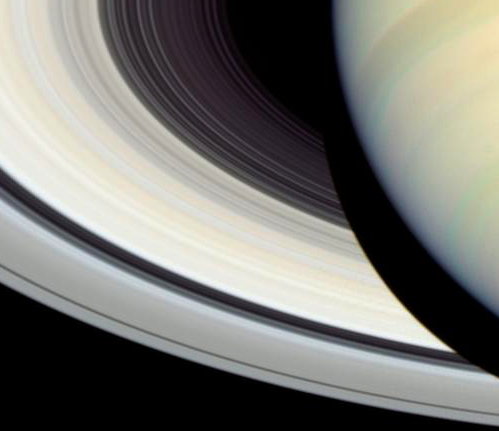
Hubble camera exposures in four filters (blue, blue-green, green, and red) were combined into this image, to render colors similar to what the eye would see through a telescope focused on Saturn. The subtle pastel colors of ammonia-methane clouds trace a variety of atmospheric dynamics. Saturn displays its familiar banded structure, and haze and clouds of various altitudes. Like Jupiter, all bands are parallel to Saturn's equator. Even the magnificent rings, at nearly their maximum tilt toward Earth, show subtle hues, which trace chemical differences in their icy composition.
Over two decades have passed since a robotic emissary from Earth last visited Saturn. This was NASA's Voyager-2 space probe, which flew by Saturn in August 1981. But ever since 1990, Hubble has filled in the gap of high-resolution Saturn imaging by tracking storms and auroral activity, and providing crisp views of the ring plane from various angles, as Saturn drifts along its orbit.
